Related Research Articles

Bath is a city in the ceremonial county of Somerset, England, known for and named after its Roman-built baths. At the 2021 Census, the population was 94,092. Bath is in the valley of the River Avon, 97 miles (156 km) west of London and 11 miles (18 km) southeast of Bristol. The city became a UNESCO World Heritage Site in 1987, and was later added to the transnational World Heritage Site known as the "Great Spa Towns of Europe" in 2021. Bath is also the largest city and settlement in Somerset.

Brighton is a seaside resort and one of the two main areas of the city of Brighton and Hove in the county of East Sussex, England. It is located 47 miles (76 km) south of London. Archaeological evidence of settlement in the area dates back to the Bronze Age, Roman and Anglo-Saxon periods. The ancient settlement of "Brighthelmstone" was documented in the Domesday Book (1086). The town's importance grew in the Middle Ages as the Old Town developed, but it languished in the early modern period, affected by foreign attacks, storms, a suffering economy and a declining population. Brighton began to attract more visitors following improved road transport to London and becoming a boarding point for boats travelling to France. The town also developed in popularity as a health resort for sea bathing as a purported cure for illnesses.

Orpheus is a 1950 French film directed by Jean Cocteau and starring Jean Marais. It is the central part of Cocteau's Orphic Trilogy, which consists of The Blood of a Poet (1930), Orpheus (1950), and Testament of Orpheus (1960).
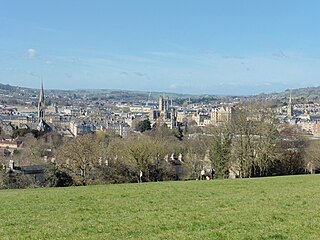
Bath and North East Somerset (B&NES) is a unitary authority district in Somerset, South West England. Bath and North East Somerset Council was created on 1 April 1996 following the abolition of the county of Avon. It is part of the ceremonial county of Somerset.
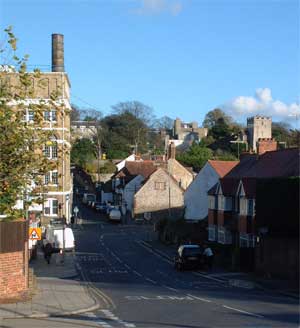
Portslade is a western suburb of the city of Brighton and Hove in the ceremonial county of East Sussex, England. Portslade Village, the original settlement a mile inland to the north, was built up in the 16th century. The arrival of the railway from Brighton in 1840 encouraged rapid development of the coastal area and in 1898 the southern part, formerly known as Copperas Gap, was granted urban district status and renamed Portslade-by-Sea, making it distinct from Portslade Village. After World War II the district of Mile Oak to the north was added. Today, Portslade is bisected from east to west by the old A27 road between Brighton and Worthing, each part having a distinct character.
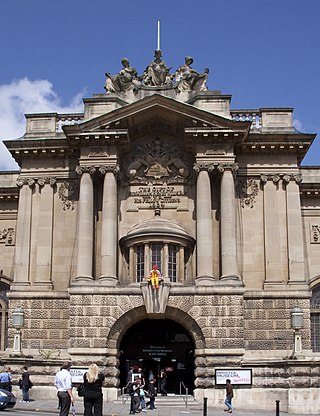
Bristol Museum & Art Gallery is a large museum and art gallery in Bristol, England. The museum is situated in Clifton, about 0.5 miles (0.8 km) from the city centre. As part of Bristol Culture it is run by the Bristol City Council with no entrance fee. It holds designated museum status, granted by the national government to protect outstanding museums. The designated collections include: geology, Eastern art, and Bristol's history, including English delftware. In January 2012 it became one of sixteen Arts Council England Major Partner Museums.

Blaise Castle is a folly built in 1766 near Henbury in Bristol, England. The castle sits within the Blaise Castle Estate, which also includes Blaise Castle House, a Grade II* listed 18th-century mansion house. The folly castle is also Grade II* listed and ancillary buildings including the orangery and dairy also have listings. Along with Blaise Hamlet, a group of nine small cottages around a green built in 1811 for retired employees, and various subsidiary buildings, the parkland is listed Grade II* on the Register of Historic Parks and Gardens of special historic interest in England.
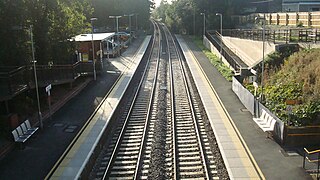
Keynsham railway station is on the Great Western Main Line in South West England, serving the town of Keynsham, Somerset. It is 113 miles 63 chains (183.1 km) down the line from London Paddington and is situated between Oldfield Park and Bristol Temple Meads stations.

North Laine is a shopping and residential district of Brighton, on the English south coast. Once a slum area, it is now seen as Brighton's bohemian and cultural quarter, with many pubs, cafés, theatres and museums.

The history of Brighton is that of an ancient fishing village which emerged as a health resort in the 18th century and grew into one of the largest towns in England by the 20th century.
William Richard Hoskins is an English footballer who plays for Southern League Division One Central club Kings Langley, where he plays as a forward.
An Artists Open House is a special example of an Open Studio whereby the studio is a residential venue, usually a house or a garden. The format of an Open House is very similar to an Open Studio, but the significantly lower cost of exhibiting in a residential venue than a studio or gallery provides more artists an opportunity to exhibit their work.

St John the Baptist's Church is a Roman Catholic church in the Kemptown area of the English city of Brighton and Hove. It was the first Roman Catholic church built in Brighton after the process of Catholic Emancipation in the early 19th century removed restrictions on Catholic worship. Located on Bristol Road, a main road east of the city centre, it is one of 11 Catholic churches in Brighton and Hove. The Classical-style building, which was funded by Maria Fitzherbert and completed in 1835, has been listed at Grade II* by English Heritage for its architectural and historical importance.

Kings Weston Roman Villa is a Roman villa in Lawrence Weston in the north-west of Bristol. The villa was discovered during the construction of the Lawrence Weston housing estate in 1947. Two distinct buildings were discovered. The Eastern building was fully excavated, the other lies mostly below Long Cross road. Finds from the site are now held in the Bristol City Museum and Art Gallery.
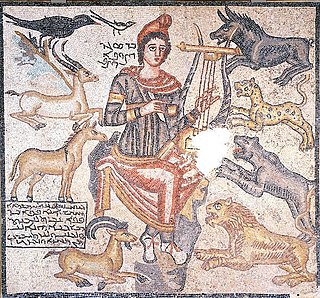
Orpheus mosaics are found throughout the Roman Empire, normally in large Roman villas. The scene normally shown is Orpheus playing his lyre, and attracting birds and animals of many species to gather around him. Orpheus was a popular subject in classical art, and was also used in Early Christian art as a symbol for Christ.

In Greek mythology, Orpheus was a Thracian bard, legendary musician and prophet. He was also a renowned poet and, according to the legend, travelled with Jason and the Argonauts in search of the Golden Fleece, and even descended into the underworld of Hades, to recover his lost wife Eurydice.

Joshua Brownhill is an English professional footballer who plays as a midfielder for Premier League club Burnley. He has previously played for Preston North End, Barnsley and Bristol City.

The 2004 Football Second Division play-off final was an association football match which was played on 30 May 2004 at the Millennium Stadium, Cardiff, between Brighton & Hove Albion and Bristol City to determine the third and final team to gain promotion from the Football League Second Division to the Football League Championship. The top two teams of the 2003–04 Second Division season, Plymouth Argyle and Queens Park Rangers, gained automatic promotion to the Championship, while the teams placed from third to sixth place in the table took part in play-off semi-finals; the winners of these semi-finals competed for the final place for the 2004–05 season in the Championship. Brighton and Bristol defeated Swindon Town and Hartlepool United, respectively, in the semi-finals.
Jayson Patrick Molumby is an Irish professional footballer who plays as a defensive midfielder for EFL Championship club West Bromwich Albion and the Republic of Ireland national team.
Haydon Cameron Roberts is an English professional footballer who plays as a left back & centre back for Championship side Bristol City.
References
- ↑ "The man who put Orpheus together again!". 26 March 2013. Retrieved 21 December 2017.